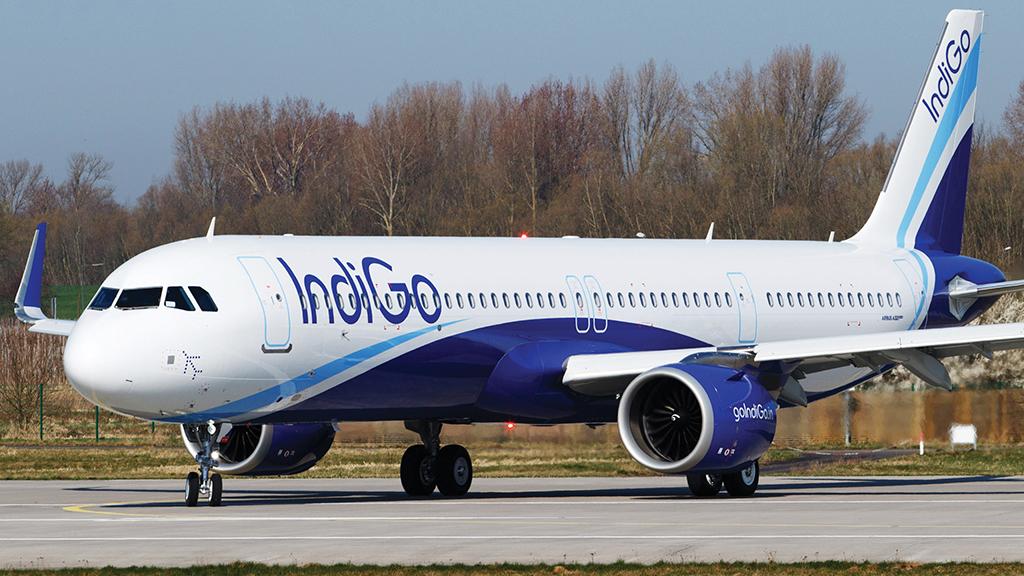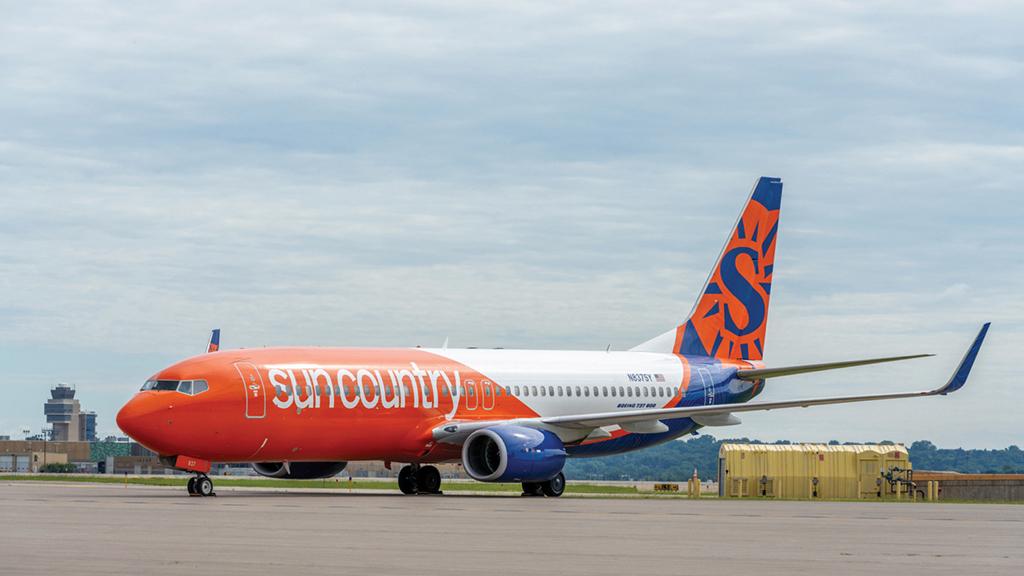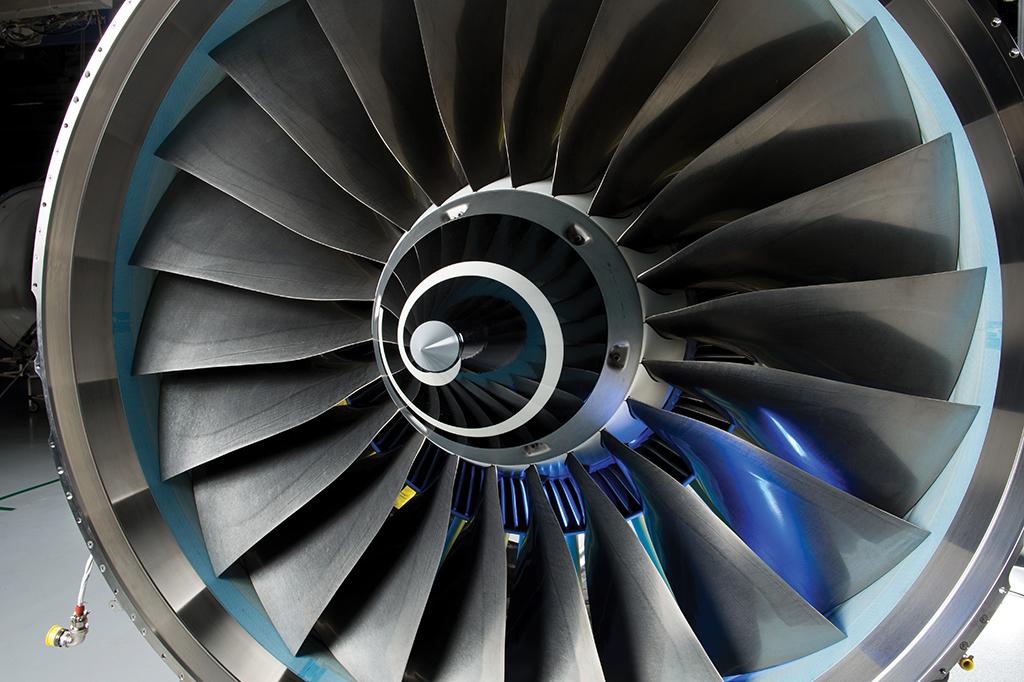
The past year saw massive fleet groundings in the wake of the COVID-19 crisis. While many MRO providers found work in aircraft restoration services and areas such as freighter maintenance, workloads were sharply reduced. One major casualty was a drop in scheduled engine maintenance, with carriers looking to postpone or cancel expensive overhaul work. Four key observations emerged from Aviation Week’s Engine Leasing Trading and Finance virtual event in May.
Airlines Renegotiate Leases and Look To Use Engines With Green time
Among these was Kenya Airways, which during the pandemic made changes to its maintenance strategy, according to its head of engineering services, Hawkins Musili. “We had to look at upcoming maintenance events and heavy checks and try as much as possible to push those maintenance checks out. This was the same for engine shop visits,” he says.
The airline currently operates 15 Embraer 190 and 10 Boeing 737NG aircraft, mostly comprising the -800 variant. The COVID-19 crisis led to a readjustment of its fleet. “We’ve been looking at the ownership and maintenance condition of aircraft and have made some decisions to retire aircraft,” he says. “This is mostly driven by ownership factors—looking at whether the aircraft is owned or leased, maintenance condition and in areas such as engine green time to make sure we aren’t spending unnecessary money on engine shop visits and, where possible, bringing in spare engines.”
While predominantly a passenger airline, Kenya Airways has looked to redeploy some of its fleet for cargo operations over the past year. The type of 737 it operates is a good aircraft to have in the current climate and for such freighter services, Musili believes. “From a maintenance-cost perspective, it is a good aircraft to have because they are younger in age and can be flown across a larger network,” he says.
Kenya Airways also sought to renegotiate leases on aircraft coming to the end of existing agreements. “For aircraft nearing end-of-lease, we would try to negotiate an early termination with lessors, which gave us relief in terms of performing maintenance and engine shop visits,” Musili says. “Since demand wasn’t as high, we grounded aircraft having shop visits coming up and started utilizing other aircraft with sufficient green time on the engines.”
The acquisition of engine assets has been somewhat volatile over the past year, says Musili, but the current environment places carriers looking for assets into a position of strength. “It is currently a lessees’ market, and we are able to get favorable pricing on acquisition of assets for as [little] as 50% compared to pre-COVID-19 times,” he says.
Another airline that renegotiated existing agreements with lessors was U.S.-based low-cost carrier Sun Country Airlines. The Minneapolis-headquartered airline operates an all-Boeing 737 passenger fleet consisting of 31 aircraft, along with 12 cargo aircraft operated in conjunction with Amazon Air since May 2020. “The scheduled service business was hit the hardest, and in April 2020 we were down 90% in terms of passenger bookings versus April 2019,” says Dave Davis, the carrier’s president and chief financial officer.
Davis says that despite the reduced passenger numbers, the carrier saw growth in its cargo business, so the airline did not shrink overall. But to reduce costs, Sun Country looked to renegotiate existing leases. “We didn’t want to extend any leases and instead deferred payments into late 2020 and early 2021,” he says.
Long-term, the strategy set out by its private equity owners, Apollo Global Management, will center on less leasing and more ownership of aircraft, with its fleet set to grow to 50 aircraft by the end of 2023. Davis says this ownership model gives the carrier more flexibility in areas such as maintenance. This fleet growth is likely to be accelerated due to an expected increase in passenger demand as the pandemic recedes and what Davis describes as the “favorable market for used aircraft.”

The airline has no orderbook and instead focuses on acquiring mid-life 737-800 aircraft, Davis says. “There’s a lot of these aircraft on the market right now, and we are actively pursuing those. We are bidding on a lot of aircraft.” He adds that it is also very active in terms of acquiring used engines and parts as well as burning green-time engines, with the airline looking for more CFM56-7B engines to either use in its fleet or for parts.
While operating in a different region of the world, Sergii Grytsenko, fleet contracts director for Ukraine International Airlines (UIA), says the airline faced similar problems in relation to renegotiating both maintenance and leasing contracts in the wake of the crisis (see page MRO 10). Grytsenko described 2020 as a “disaster year” for the airline, highlighting both the January 2020 crash of a UIA-operated 737-800 resulting in 176 fatalities and shortly after that, the outbreak of COVID-19.
Downsizing its fleet was an immediate priority. “We went to lessors and other customers and were able to renegotiate the early termination of about 30% of the fleet,” Grytsenko says, a move that saw the fleet reduced from 42 to 28 aircraft. Three 737 MAX orders were also canceled after UIA utilized an early termination option.
Grystenko believes there will be a wave of retirements bringing much sought-after assets to the market, but it’s a question of when. “Two years ago, everyone was talking about new aircraft, but now everyone is trying to save money and costs, and today older 737s and E195s can compete with younger-generation aircraft,” he says. The airline typically tries to operate engines until the green-time phase and does not undertake early repairs. Grytsenko shares the view of Kenya Airways’ Musili on asset pricing and says engine availability has also broadened. “A few years ago, it was almost impossible to find good reliable engines, but nowadays it seems each lessor now has these,” he adds.
Lessors Expect More Short-Term Engine Leases
Although the engine sector of the leasing market is expected to recover at a slower rate than airframe leasing, an uptick in short-term engine leases is expected over the next 12-18 months, as airlines look to offset expensive shop visits.
“Airlines will most likely lease engines instead of actually spending large amounts of money on shop visits. It’s cheaper from a cash perspective in the short term,” says Tadhg Dillon, senior vice president and head of sales and marketing at Shannon Engine Support.

“If you have an engine with an airline that needs a shop visit, mature lessors will be talking to the carrier to ensure a way to get that engine maintained and back on-wing again,” Dillon says. “From the airline’s perspective for their own engines, do they go and spend $5 million on an engine or lease an engine short-term to preserve cash for 12-18 months until the crisis is over? Many airlines are heading down the short-term leasing route.”
In a COVID-19-hit market, engine leasing saw an impact right away on short-term lease stock, which was immediately being redelivered on scheduled expiry in 2020. Demand for long-term leases was pretty much nonexistent for the entire year. But now an increase in short-term leases is widely expected, from this year through to 2022-23.
Julian Jordan, executive vice president and head of new business at Engine Lease Finance, is seeing similar trends as Dillon in the short-term engine lease market. “We are seeing some signs of recovery in the short-term, in terms of shop-visit avoidance,” he says.
“Demand is coming back in certain markets, especially in big domestic ones such as the U.S. and China. Long-term, we hope for a bit more normalization—we’ve seen some relatively crazy deals happen in the new sale-and-leaseback space. Once we see some supply building again, we hope for more normalization and [to] get back to a point where returns are more acceptable.”
While the market is slowly recovering, the slow pace of vaccinations in certain regions could lead to a more sluggish revival on a global scale. “When you look at what is happening in India, the Asia-Pacific and Latin America, there still needs to be a recovery,” adds Denise Mangan-Fahy, GECAS Engine Leasing’s senior vice president for portfolio planning and rental operations. However, this is not deterring the company’s investment plans for the year, Mangan-Fahy says. “We’re continuing to invest money and be active for the year. . . . The fundamentals haven’t changed,” she adds.
Speaking from the perspective of an MRO business, Patrick Biebel, managing director of MTU Maintenance Lease Services, also sees more short-term lease demand, while an uptick is expected to begin in the second half of 2021 from the MRO side of the industry. “This would naturally trigger a higher demand for alternative thrust, which could either come from swapping engines on parked aircraft or using spares and leased engines from the market,” he says. “The question is how steep will the recovery be and how quickly will those parked aircraft be reintegrated or retired from the fleets?”
OEMs Address Reliability and Cost of Ownership
OEMs have taken a major hit during the past year owing to cuts in production as well as disruptions to their after-market businesses. This was most evident in the engine segment, which was hit by a wave of deferred or canceled shop visits. However, the downturn afforded some manufacturers an opportunity to look at issues of reliability and cost of ownership, often cited as challenging by operators.
Among these are Rolls-Royce, which, following an MRO load reduction of around 11%, looked to move forward with wellness programs for some of its Trent engine programs. These include the Trent 1000 engine, which Rolls-Royce set about modifying after undergoing technical issues related to its fan blades back in 2019. “During the pandemic we came back up to speed with no disruption in terms of AOG to our customers, and we made good progress in incorporating the modifications to that program,” says Romain Chambard, vice president of marketing at the British engine-maker.
About the cost of ownership, Chambard says Rolls looked to make additions to its existing services portfolio to address specific needs around flexibility. These include a SelectCare Repair offering that provides a check on repair coverage for operators that they can opt for on a standalone basis. This, he says, is the company’s way of “trying to adapt to the market” and “see what the airline or lessor wants to do.”
“We were able to take advantage of a tough situation and make the most of it,” says Gijs Gielen, director of aftermarket marketing at Pratt & Whitney, talking about the pandemic. Like Rolls-Royce, he says Pratt & Whitney was able to implement fixes to an engine program, in this case, the GTF. “We were able to accelerate some of the upgrades we had already identified and roll them out across the fleet much faster by taking advantage of that reduced utilization,” he says.
A specific example is a titanium-aluminite blade on the GTF that didn’t prove sufficiently robust in service. “That has been retrofitted across almost the entire fleet with a nickel blade, which is much more robust,” Gielen says. There was a similar occurrence with an integrated drive generator gear found inside the accessory gearbox. “We were able to do it faster because aircraft were available to take the engines off-wing, bring them into the shop and then send them back.”
The V2500 is easily Pratt & Whitney’s model with the largest installed fleet. “Pre-COVID, around 6% of the V2500 fleet produced had been retired, which was slightly lower than what we had anticipated—we had it closer to 7%,” says Gielen. Following the crisis, he expects some acceleration in retirements but expects that it will remain relatively unchanged long-term.
GE Aviation used the downturn to catch up on some entry-into-service issues on engines such as the GEnx powering the 787 and 747-8, says Brian Ovington, director of marketing for engine services at GE Aviation. “This not only incorporates fixes identified through on-wing support, shop activity or software changes but advancing durability redesigns so that as production ramps up we’ll be ready to incorporate changes and get the fleet ready to a more stable configuration when things recover in the next few years.”
On the MRO side, GE Aviation readjusted capacity for demand as it did for its supply chain operation. “We are constantly monitoring to see when that capacity needs to be brought online and be ready with both overhaul and repair capacity and parts supply,” Ovington says. He adds that resolving the technical issues related to the Leap engine has also seen progress in efforts to improve reliability. “We’re well on our way to implementing fixes, there are a few redesigns left to go, but we are on a path to a stable configuration.”
Will Investor Confidence Rebound?
In the past year, the aviation industry has seen massive fleet groundings, airlines restructuring financially, rental deferrals, early asset returns, an inactive secondary market and hits to OEMs’ orderbooks. As the industry looks toward a long-term recovery, restoring the confidence of investors hard hit by the crisis will be essential.
But for any recovery to take place, it is the resumption of air traffic that is pivotal. COVID-19 has been a unique crisis with few precedents, says Simon Finn, director of aviation for EMEA at MUFG Bank. He sees passenger confidence as being like investor confidence. “It’s been notable that where restrictions are lifted, rather like investors, passengers aren’t too deterred by COVID-19 or the challenges that are facing the vaccination process,” he says.
Ultimately, Finn says companies operating in a certain way will be the ones who will attract investors. “It is those who are nimble, quick and with fast operational management and the best business models that are probably going to prove the most attractive to the investment community,” he says.
“Clearly, the airlines are desperate to get back into profitable operation, but in the end, governments are going to err on the side of protecting their populations, and it is a very patchy picture,” says Philip Bolt, director at Bolt Advisory. Despite some countries being particularly successful in vaccination rollouts, Bolt says that bilateral agreements for travel have different scenarios on each side of them. “It’s going to be messy through the rest of this year and through most of next year—there could be another sting in the tail come next winter.”
The emergence of investors deploying capital to airlines tapping into the sale-and-leaseback market and benefiting from strong balance sheets or state support has also been a factor in recent times. While aviation has incurred deep financial losses, Markus Neidermeier, managing director at LHI Group, says airlines are benefiting in certain areas.
“If we compare our aviation portfolio to our real estate portfolio, we had almost no defaults in payments on leases, which is interesting because many governments did support leading airlines, so this is a positive of the crisis,” he says. “Many investors are focusing on really good credits, and there is some positive outlook for some airlines at least to gain some market share as others may drop out from the market.”
“There certainly has been a concentration on better credits from a great many of the investment and lending communities,” adds Finn, who cites the aviation industry’s resilience in the face of downturns. “Volatility doesn’t necessarily deter the investment community—in fact, it can be something that attracts them. There’s a certain type of individual who will look at the industry and see this period of volatility . . . and see the opportunity that may develop around a recovering industry.”
Investors’ emphasis on flight to quality, which typically sees them offload higher-risk investments in favor of safer ones, could also be a factor in the coming years. “The flight to quality has left a lot of opportunity out there,” says Bolt, who specializes in residual value and says he is seeing more inquiries now than at any time in the past 10 years. “What we’ve seen is how assets have been responding in different ways to the crisis and how resilient they’ve been. If there is a flight to quality by the players in the market, then there will be an opportunity for new players to come in and provide service for every level of the credit-risk spectrum of the airline sector.”
Aviation/Aerospace Consultancy ICF's Leasing Trends
- Further lessor consolidation expected/two large transactions expected in 2021
- CFM56-7B demand expected to recover by late 2021/early 2022
- CFM56-5B set to recover at slower pace due to current over supply
- V2500 is on high demand due to shortage of serviceable second hand engines
- Greentime requests increasing for V2500
- Freighter uptick could increase PW4000 demand





